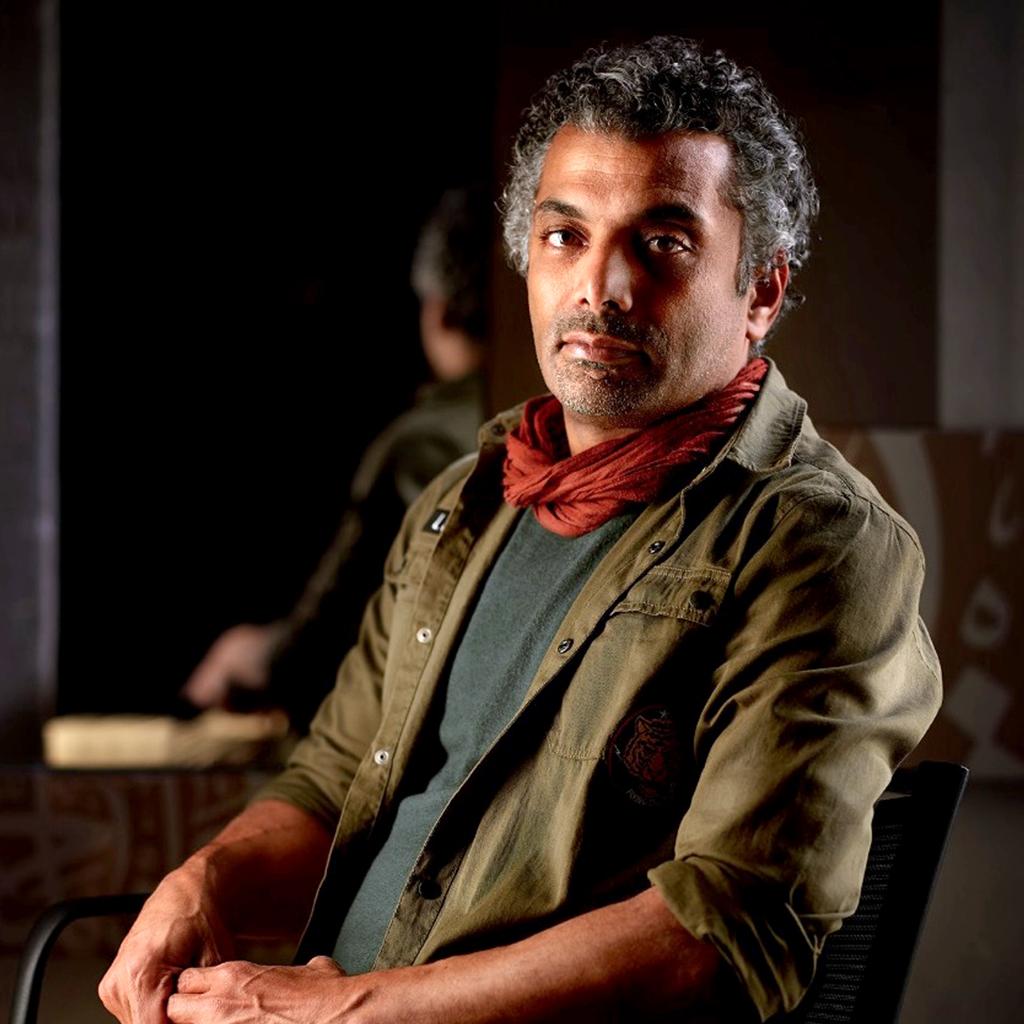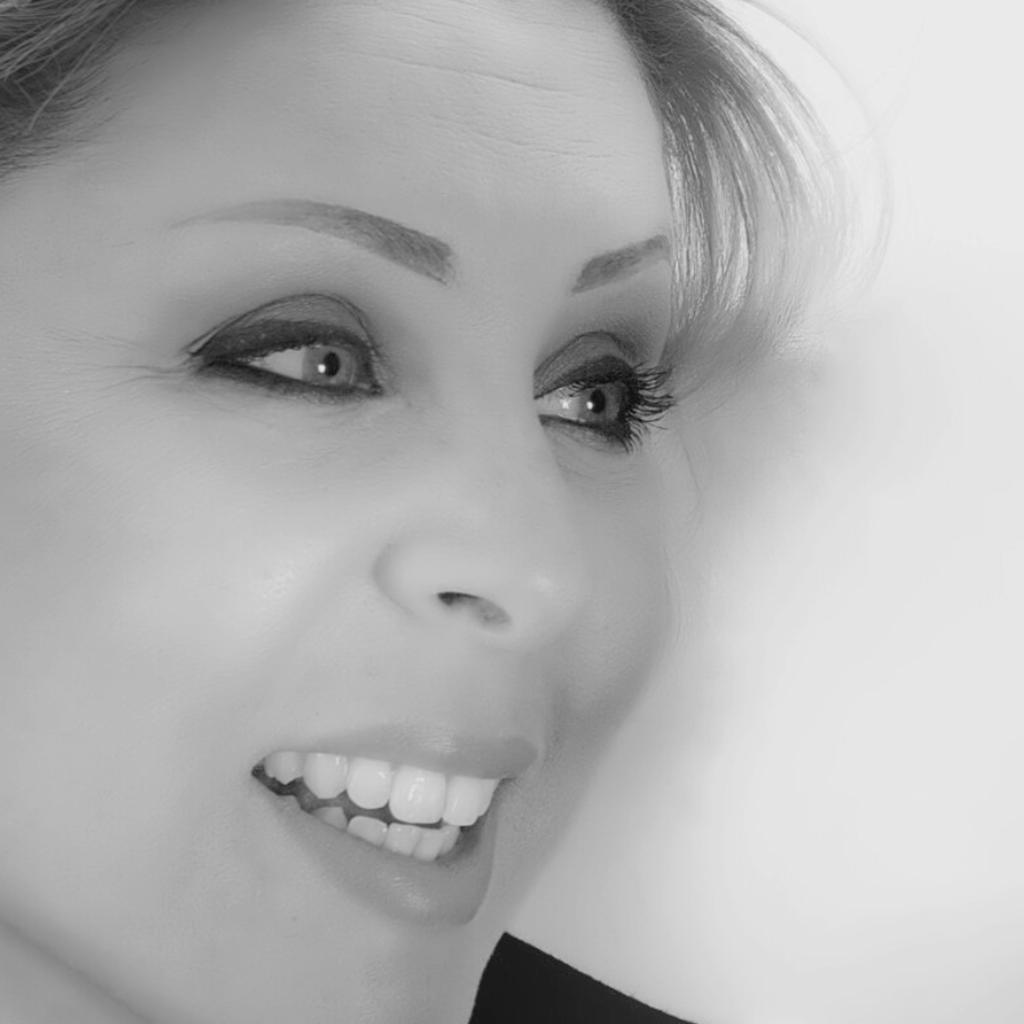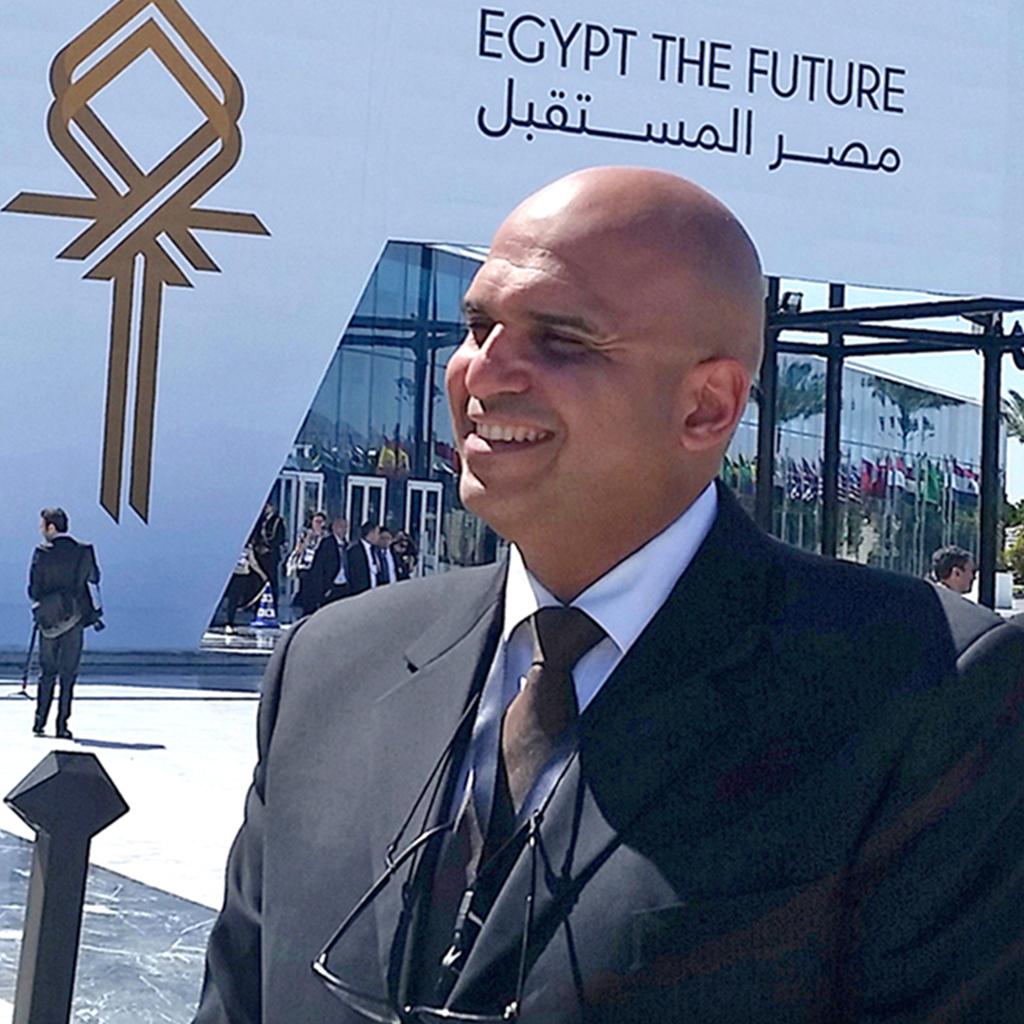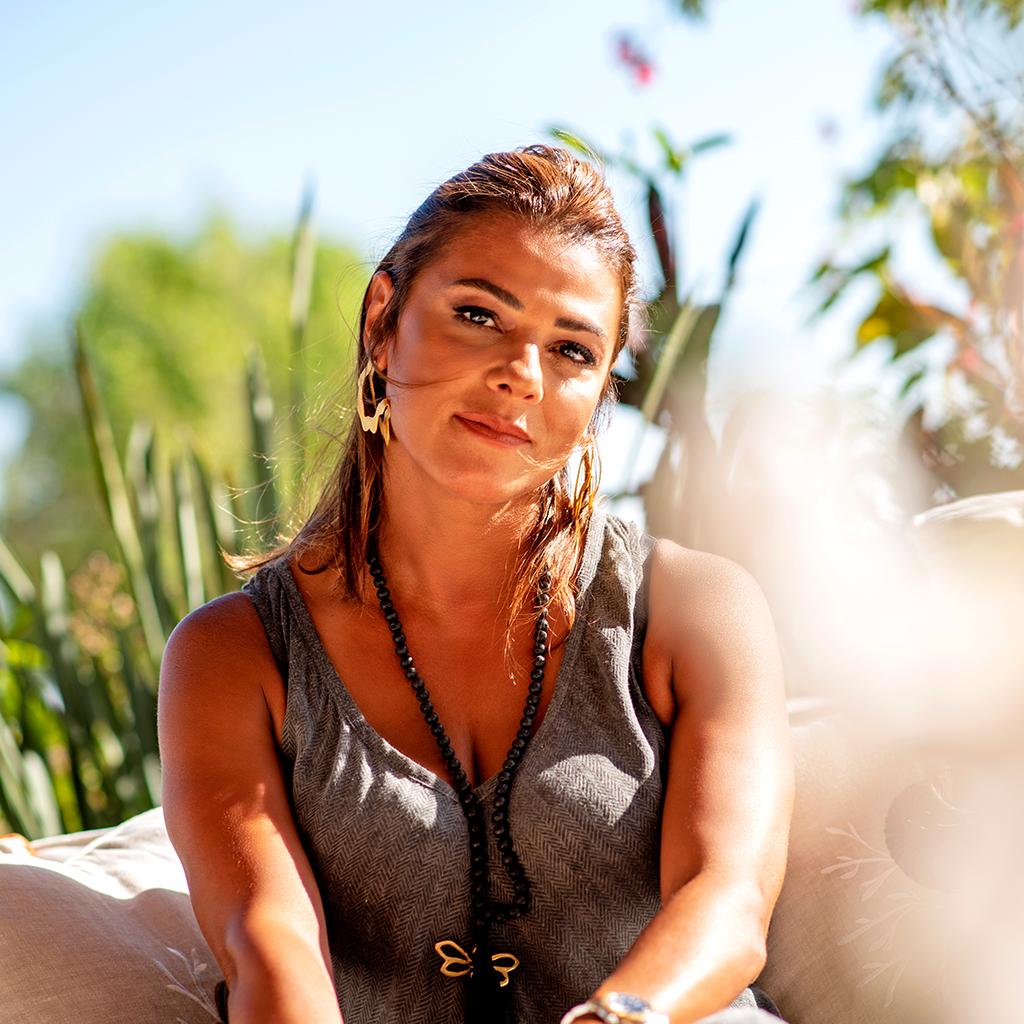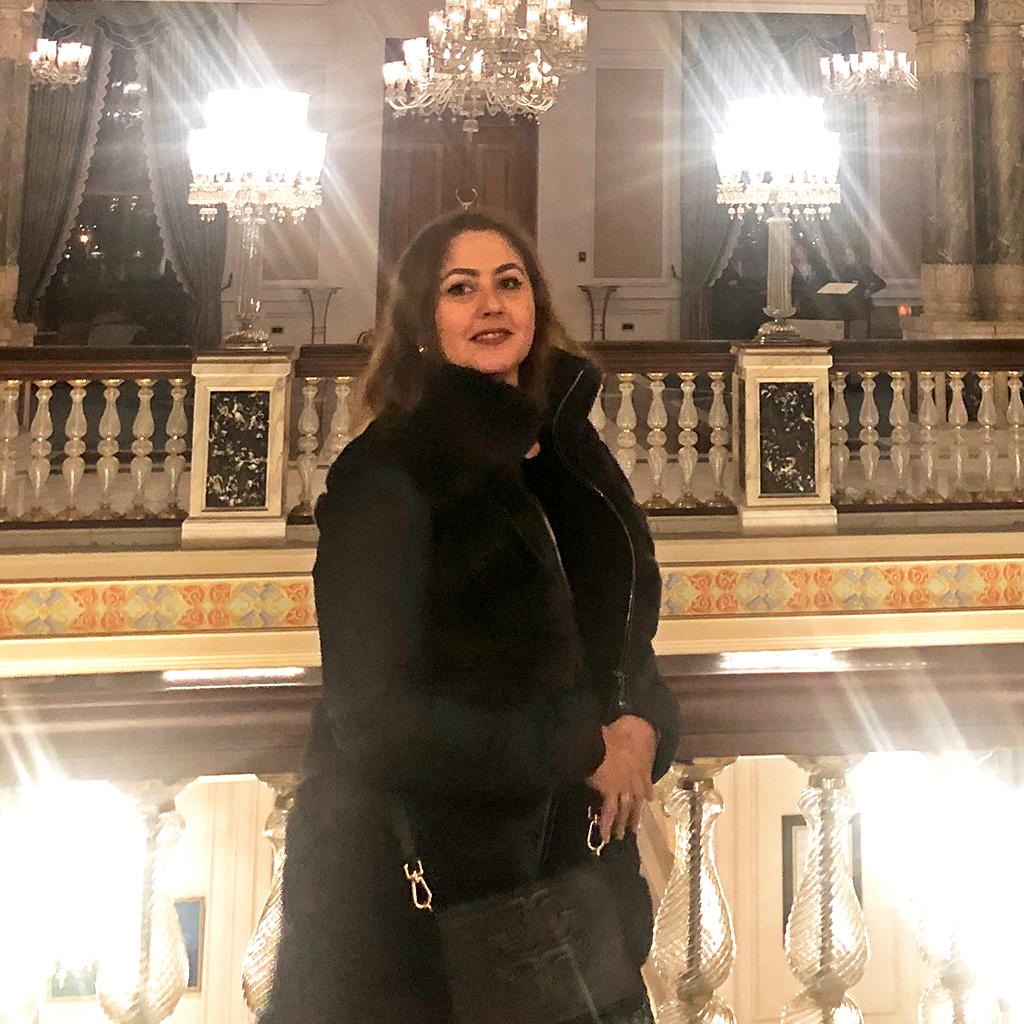
Written by: Perihan El Etreby
Date: 2022-06-01
Eng. Pakinam Mostafa, Founder of Paky Art House sharing with us her journey, passion and successful highlights in an exclusive interview
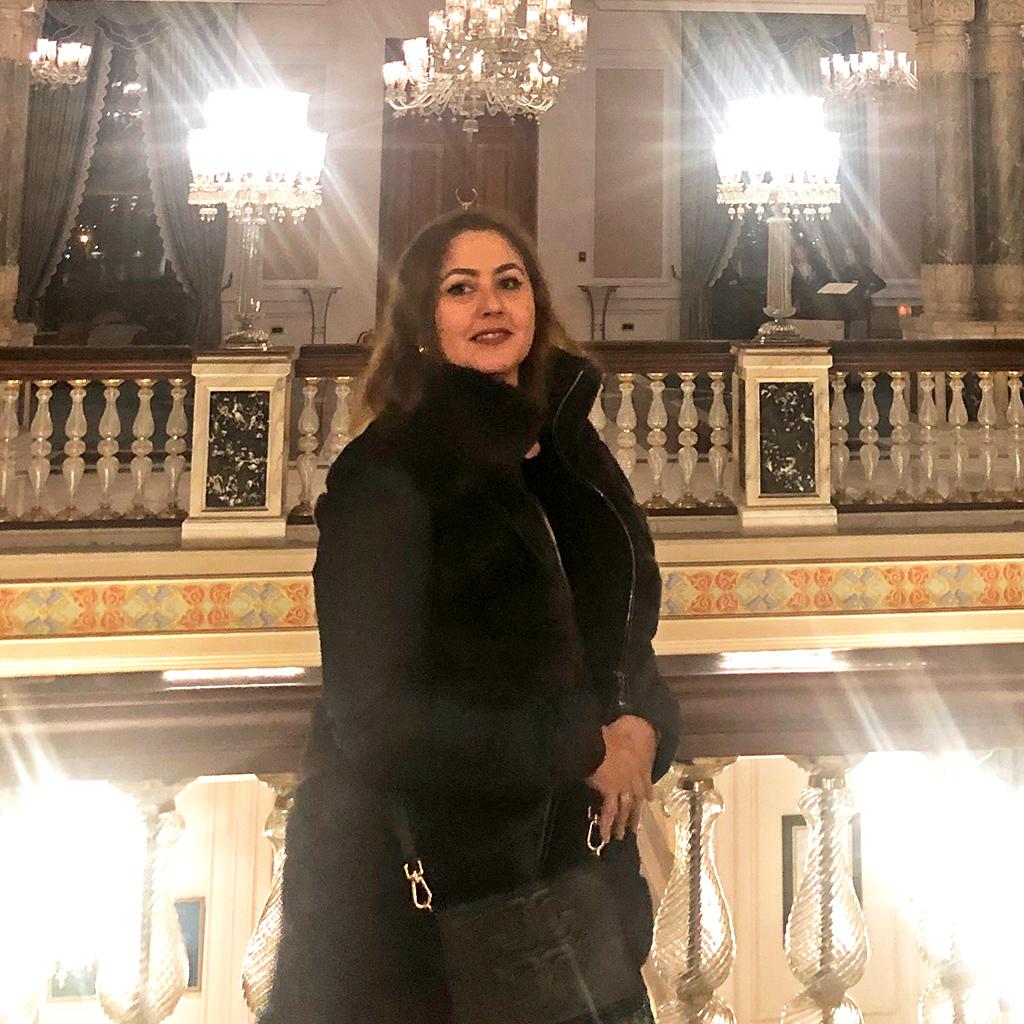
We had a delightful conversation with Eng. Pakinam Mostafa, Founder of Paky Art House. She shared with us her journey, passion and successful highlights in an exclusive interview.
Paky Art House is a global leader in glass design and fabrication for the hospitality industry, with 25 years of experience and clients worldwide. They excel at supporting designers throughout every phase of the development process, from initial feasibility studies to finish fabrication.
How It All Began
Pakinam Mostafa graduated from the Faculty of Engineering, Civil Department at Alexandria University in 1993. She has always been passionate about handicraft, so she started taking courses alongside her profession to fulfill this area. Pakinam worked at a construction company in 1995, a period during which the ISO certificate was trending. Besides her main role, she was responsible for quality assurance and was a technical office manager. The company acquired the ISO certificate in only 3 months. Later, Pakinam traveled abroad to enrich her knowledge and experience about the system and the industry as a whole to apply the rewarding new concepts back in Egypt. As handcrafting was one thing that Pakinam couldn’t get out of her mind or work, she registered in a program in France to pursue her passion. She spent a year in this school until she majored in glass art. And this is where her professional career in glass art started.
Her graduation project was based on a request from Lalique Group. She got famous for cold carving instead of hot casting, where she could bring the same results as hot casting through cold carving. Hot casting is very limited. In Lalique, they could do any design. Since she came back to Egypt, she specialized in glass art. She could do ornaments, light furniture, and more with multi-carving glass. “This gives you a sense of Lalique but you’re flexible in dimension and designs.” Pakinam expressed how much she loves handicrafts, but it was not all built on passion only. “I’ve always loved working with my hand. But later, I realized that it’s not only about crafts, but it’s also about the material. I understand material well and this forms a great part of my success,” Pakinam said.

Paky Art House
Paky Art House was established in 1996. At first, they worked on stained glass or leaded glass, hand-carved glass, glass mosaic, and fire-painted old techniques, like those found in old museums, old churches, the Haramlek Palace of Alexandria for example. “This type needs a very sophisticated technicality. We studied that from old books; encyclopedias on how to do this. You become an original by learning a sophisticated craft, that you should not fake or copy. Our mission from the beginning was to stick to original techniques.”
Paky Art House grew into 3 entities within one big entity; a big design office, a fabrication factory that manufactures up to 95%, and a contracting company that deploys or places the work.
They are popular for mastering the specialties in any project; this is their scope: specialties. “We can work on one nice combined piece that comprises 7-8 materials together. So, we do not work on mass production or focus on common work, but what we aim for has to do with very special solutions. It’s more of ‘design and build’. We partner with designers and contractors right from the start. We work now with more than 21 techniques that could produce more than 59 functions.”
Some of the services’ strength points they offer to their clients include the oldest antique mirror line and glass line with real original techniques. They also offer Murano, a very old complex technique that they could master through research and studies. They offer texture glass and all that’s vintage, including glass and mirror, as well as complete units combining 6-7 materials, and also, mirrors with golden or silver frames, which is the current trend. “We use different materials in our work, like recycling a very unique expensive piece of glass to produce special pieces, doors, or tableaux. We also heal the artwork. We care about safety, so we use the most advanced technology for glass and mirrors, counters, bookshelves, stands, partitions, windows, staircases, skylights, or any other function that needs decoration, whether for the interior or exterior. We use the best technology and safety measures, but all the work is handmade.”

Caring About the Environment
Paky Art House is an environmentally friendly business because glass is a green material and is sustainable. “Glass is 100% environmentally friendly, and the scrap produced is always recycled from our part. They are recycled in artwork, using the traditional technique of mouth-blown glass. The glass material itself is recycled glass, produced by the melting of common items (soda bottles, etc…) that are collected by the artisans.
We also have an extremely interesting savoir-faire in contemporary glass techniques (panels, engraving, surface effects, etc…) that could be interesting for its customized craftsmanship.”
Pakinam explained that they melt the glass and make blowing in the form of molds or as said, free blowing. This is the bubbled glass we normally see in the market. They have very special designs.
“We are green because nothing that we work with causes pollution. We are very limited and controlled. We also do blue designs, saving water, in addition to the green design and recycled systems.
“We pay back to the community. It should not always be about us.” Paky Art house pays back to the community and raises the level of awareness among people and businesses through recycling. “I'm a fan of recycling any material. It makes me personally satisfied when I use the scrap of any material and it results in nice products.

The Success in International Markets
“We have started cooperating with Italian and French designers since 2009. We took part in a reputable exhibition in Paris in September and January. We also worked with an association in Europe that was keen on recycling.”
Paky Art House had international clients and sold worldwide in reputable places like the Getty Museum in the United States, Vitra Museum in Germany, the Museum of London, and other boutiques in Europe- like concept shops. “We’ve always made sure to carefully select who should display our work,” Pakinam mentioned.
From 1996 to 2007, we were new in the market. We offered solutions and designs to the market that the market was in need of during that time. People have been waiting for our new designs of the month or our show in Le Marché and Tarek Nour since 2007. We put the trend in the market. Everybody was waiting for what we’ll display this year.”
It was a period during which clients were waiting for solutions for their houses and projects. During that time, Pakinam and her team were very busy. People were taking what they offered, trusting it with their hearts and souls. “Sometimes, we were late for delivery, taking 60 days to deliver one door for example because of the orders’ load.”
They created new designs with some new functions using their 4-5 techniques. They added ornaments to their line and provided the most beautiful customized giveaways. Pakinam Mostafa was proudly chosen as one of the most powerful women in the Middle East by Fortune magazine in 2007 in California.
Throughout her career, she later realized that she was a passionate person and not a very good professional trader or manufacturer. “I discovered that I became a brand name without working intentionally towards it; it was just my passion and hard work paying off without prior plans,” she explained. So, she started working more professionally after this realization, thinking about her strategy plans for 3-5 years, locations, and so on. From that time, she started to set targets, highlight the business vision and mission clearly, and understand their weak points and strengths. They were working on their own, creating, with no entities or experiences from anywhere to follow. It was all about trial and error. So, they started putting everything down, putting plans, and then, they enlarged their scale.

Business Challenges
“In 2011, we lost everything to the revolution. Our shops were destroyed and we got robbed; all the factories and warehouses were gone. We lost our cars and people. So we have started from scratch, again, but with new passion and positive energy. Our vision and the market analysis showed that the market needed us, so we gave more and produced more at that time, with widened horizons.”
In 2015, they had a lot of new ‘everything’. A lot of new techniques. They got out of the bubble of their 5 techniques and added more until they reached 17-18 techniques, and applied new functions and usages for their projects, creating a new vision, and receiving new clients.
Then, Pakinam was asked to work on projects in the New Capital, which was very challenging. Some of the projects included working on 15 guest villas at the St. Regis Hotel, along with a very sophisticated big conference hall, and another extra 6 conference halls of different sizes, along with commercial buildings, a mosque, and a remarkable restaurant.
“We had the honor to be part of this group who made sophisticated projects in a very short time. It is taking the attention of the whole world, where many people and investors came to this place with the aim of urbanizing the desert.”
One of the closest projects to Pakinam’s heart is the new opera in the New Capital where they have special unique designs made with love. She has studied different levels of design for this project in particular. “When you go to such a significant and sophisticated project where you deal with a landmark, you have to give it all your time and your heart.”
Pakinam mentioned that one of her most challenging projects was the Ramsis Station project in 2011. It took place during the revolution and it was so close to Tahrir square; So items like glass chandeliers were very challenging to install at such a critical time.

Open To All
Pakinam works with all different kinds of clients, including end-users, house owners, interior designers, consultants, and contractors. Some clients are open to proposals and they give Pakinam the authority to guide them throughout the whole project, others come with design ideas and have an imagination of what they want, so they describe it and discuss with Pakinam and her team the solutions, and others might have a solution ready and seek help with the execution and installment, which rarely happens, “because they trust us. We pay attention to the clients’ desires and expectations, and we listen closely to what they have in mind and understand well the style they want. We listen very well and diagnose. And we’re very flexible to discuss the designs a few times to make sure that this is the perfect and most suitable product for them. So, gladly, we get to earn our clients’ trust.”
When it comes to trends. Paky Art House got you covered. “We put the market trends in a way. We are specialties in the projects, not providers of common products. The trends include old vintage antique mirrors with golden frames or frameless. Ripped glass is an international trend too, along with funky colors of glass, and classic carved patterns coming from bohemian or crystal glass. Shower cabinets in ripped textured glass framed with metal frames are also a trend. Vanities with mirrors in complete sets of rose gold. Glass crystal dining rooms are a go-to as well.”
Pakinam’s style is a contemporary classic that suits 90% of market needs. She highly respects Mr. René Lalique and Ms. Zaha Hadid. “I consider them icons in sustainable successful unique production and their designs are full of life and have such a positive energy.”
A Professional Advice From the Heart
“Just be passionate, be different. Don’t copy, don’t imitate. Love the material you’re working with. you have to feel it. You know, I could put my hands in a box of broken glass, get the piece I want and not even get cut once. I think I talk to the glass; they understand me, and I understand them. I talk about materials; wood, metal, fabrics. When you understand them, they respond to you and they get flexible with you.
If you're an entrepreneur, seeking a new business, and working with materials, you need to feel it, love it, and be patient. You need to respect it by spending time studying the material and its history. If you do otherwise, you’ll find it hard to find good results. You have to go through the details because it will make you different. In the end, you must be yourself, and don’t copy anybody.”

